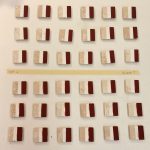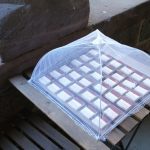From the Archives 19 — April 2017
BY SEBASTIÁN ENCINA, Museum Collections Manager
Around the world, the Kelsey Museum is known as the home for the excavations at Karanis, which the University of Michigan conducted between 1924 and 1935. The collections and archives from this expedition continue to fascinate us, and they provide a wealth of information we continue to revisit through many projects. Scholars from everywhere look to the collections, both artifacts and archives, to further research and our understanding of Egypt under Roman power. Here in Ann Arbor, the collections play an important role with classes and exhibitions.
When Francis Kelsey was finding funding for the Karanis expedition, he was actually initiating a fund to excavate at multiple locations. In 1924, U-M went to Karanis, as well as Antioch and Carthage. These latter two sites turned out to have single-season excavations, as the focus was placed on Karanis due to its rich artifact and papyrological finds. U-M stayed there through 1935, when finally excavations were completed. However, the team did not excavate only at Karanis during this time, as they ventured to other sites while in Egypt. In 1931, the team went to Soknapaiou Nesos (Dimé), and in 1935 they excavated at Terenouthis. Each of these also turned out to be a single-season excavation due to a number of reasons.
Since 1931, the Kelsey has still housed the archives and artifacts from Dimé. Not nearly as plentiful as Karanis, it still provides a wealth of information for archaeologists working at Dimé today. These archives were deposited within the papers of the Karanis Expeditions, not even separated into their own collections. Because of the tremendous attention paid to Karanis, the Dime archives are not as often studied.
Over the past academic year, Classics professor Arthur Verhoogt made an effort to focus on Dimé again. Prof. Verhoogt worked with two UROP students, Bianca Gallina and Josiah Olah, to revisit this collection, study what they could within the Kelsey as well as Bentley Historical Library. The two students scoured the letters, papers, drawings, and maps, and made note of what they found that would be useful to researchers.
For this month’s From the Archives, we present some of the items they digitized. Much like Karanis, the excavations at Dime resulted in some impressive maps. These will likely look familiar to some readers, as the style and look of these maps are similar to those from Karanis. The maps include triangulation points, cross sections, and overview of the excavation site. Having these on hand will assist us in understanding the work carried out at Dime nearly 90 years ago. This is even more important to our colleagues who continue working at the site. This Spring term, the students will continue digitizing more archival materials, including house drawings. In Autumn, the Dime excavators will visit Ann Arbor to further research the materials housed here. By then, we hope to have everything digitized to provide even greater access.
From the Archives 19 — April 2017 Read More »























